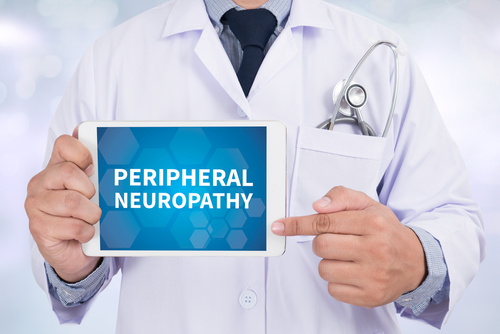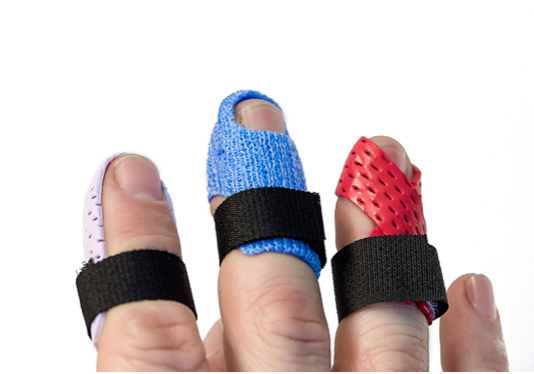Hand Function in Chemotherapy-Induced Peripheral Neuropathy: A Rapid Review
Filed under Uncategorized
Osumi, M., Sumitani, M., Abe, Hiroaki, A., Otake, Y., Kumagaya, S.-I., & Morioka, S. (2019). Kinematic evaluation for impairment of skilled hand function in chemotherapy induced peripheral neuropathy. Journal of Hand Therapy. (32)1, 41-47. https://doi.org/10.1016/j.jht.2017.06.003
By: Rita Steffes

The Skinny:
Chemotherapy has many lasting side effects (one of which is hand numbness after chemotherapy), with chemotherapy-induced peripheral neuropathy (CIPN) prevalent in 30-70% of patients receiving treatment. Winning the battle against cancer is often viewed as the last and final hurdle oncology patients must go through before returning to their everyday life before their diagnosis. However, that is not the reality for many cancer survivors. In this article, researchers examined the effects of CIPN on sensation and skilled hand functions to bring awareness to impacts made to daily functioning, quality of life, and how hand therapy services can help.
In the weeds:
This study included a total of 24 participants, consisting of 12 patients diagnosed with CIPN following chemotherapy treatment and 12 age-matched patients with no history of medical complications that affect their hands (hand neuropathy). All participants completed a sensory evaluation, clinical motor function test, three-dimensional and kinematic analysis of skilled hand function.
The sensation was tested using the Von Frey Filaments, using the 2.36 filament as the baseline, increasing filament weight until touch was noted or 6.65 was reached. Numbness was also measured using an 11 point scale, 0 being no numbness and 10 being intense numbness.
Clinical motor function was tested utilizing the Hand Grip-Release test, asking patients to grip and release testing bars as many times possible within 10 seconds.
Skilled hand function was tested using an electromagnetic motion tracker for kinematic analysis of their reach and grasp movements. Patients were asked to reach and pitch two different targets ten times at their own pace as their smooth versus jerky movements were assessed.
Bringing it home:
This study showed a significant impairment of tactile threshold and numbness in CIPN patients compared to the control group. CIPN patients also presented significant impairments in their grasp movement patterns compared to the control group, which may correlate with their tactile detection threshold. There were no significant differences in the results of the Hand Grip-Release test and kinematics of reaching results between the two groups; however, the CIPN patients scoring was slightly lower than the control group.

Rating: 3/5
This study had many limitations, including small sample size and limited inclusion criteria such as how many rounds of chemotherapy participants had for treatment and the duration of CIPN symptoms. These are all factors that could have made the results of this study more significant. However, this study can increase awareness of chemotherapy’s long-term side effects (such as hand numbness after chemotherapy) on an individual’s functional abilities to complete everyday tasks and the benefits of receiving hand therapy services.
This article raises a call to action to an overlooked diagnosis. As occupational and physical therapists, it is important to educate other medical professionals on how therapy services can help patients by publishing research on the efficacy and providing quality patient care.
Picture taken from: Osumi, M., Sumitani, M., Abe, Hiroaki, A., Otake, Y., Kumagaya, S.-I., & Morioka, S. (2019). Kinematic evaluation for impairment of skilled hand function in chemotherapy-induced peripheral neuropathy. Journal of Hand Therapy. (32)1, 41-47. https://doi.org/10.1016/j.jht.2017.06.003
More To Read
Volkmann’s Contracture
Written by Melissa Miller Introduction Volkmann’s contracture is a rare condition that occurs after injury to the elbow and upper arm, typically from a crush injury. This condition can occur when acute compartment syndrome is left untreated. If unrecognized, Volkmann’s contracture can lead to a permanent deformity in the hand and forearm. Hand therapists are…
Read MoreVideo Augmented Hand Therapy after CVA with hemiplegia.
The previous rapid review discussed the positive outcomes of video-augmented hand therapy after a CVA with hemiplegia. Please watch this vlog to discover how to make the video augmented box to make it easily integrated into your clinic. Video By: Shannon Skowbo
Read More5+ Common Mallet Finger Splints
Finger orthoses can be tough, and the mallet finger orthosis is no exception. The protocol for 15 degrees of DIP extension with mallet fingers is tricky to manage while making a splint. Small splints on little fingers are also tricky to get sized just right and with strapping in the right places. Ask any experienced…
Read MoreSign-up to Get Updates Straight to Your Inbox!
Sign up with us and we will send you regular blog posts on everything hand therapy, notices every time we upload new videos and tutorials, along with handout, protocols, and other useful information.





